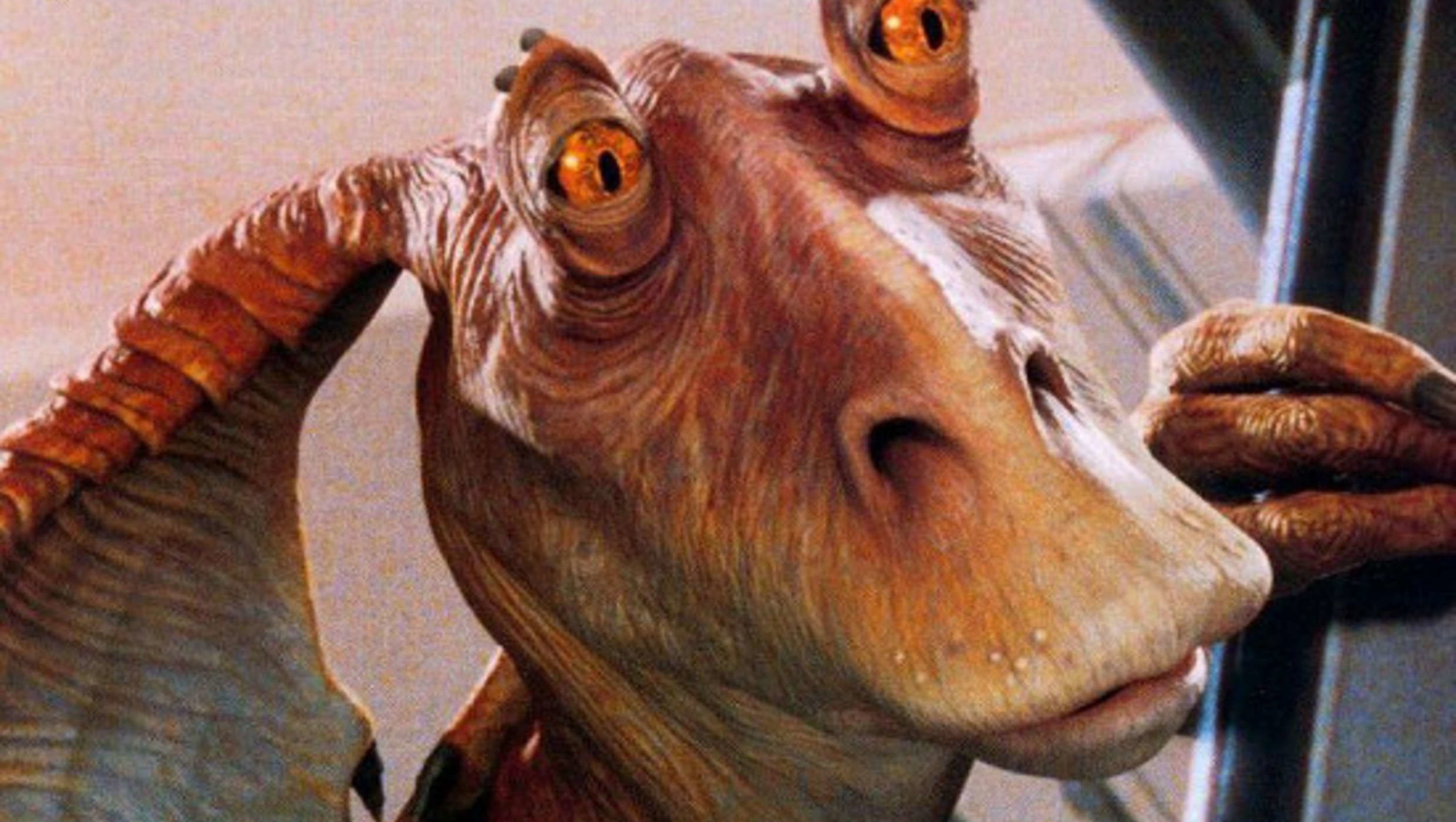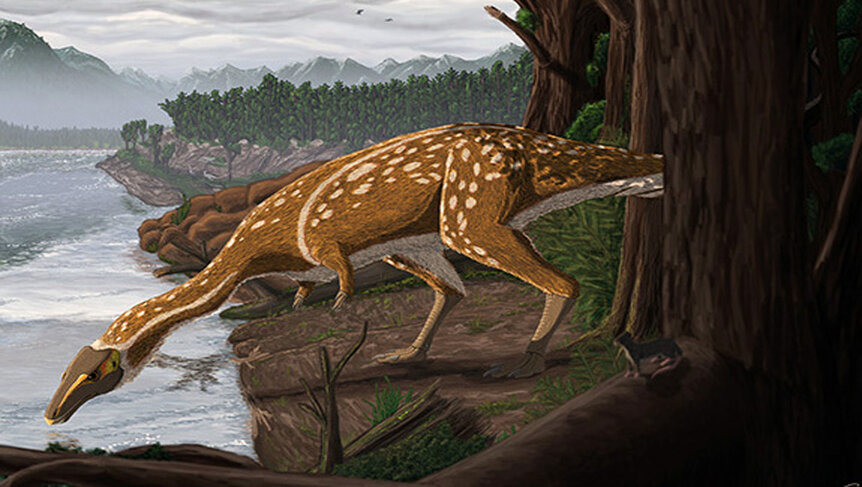Create a free profile to get unlimited access to exclusive videos, sweepstakes, and more!
Weirder than Star Wars, this dinosaur kind of looked like Jar-Jar Binks with no teeth

Gungans don’t exist, except on Naboo, which also doesn't exist, but in a galaxy far, far away from the Empire and the Rebel Alliance, there was once something that could almost pass for that species of alien.
Jar Jar Binks apparently has a cousin who has been extinct for 110 million years. When a peculiar bone was found in a Cretaceous fossil site in the Australian province of Victoria several years ago, it was mistaken as a vertebra from a pterosaur. When paleontologists Stephen Poropat and Adele Pentland from Swinburne University recently re-examined it, they couldn’t figure out what type of pterosaur the bone belonged to. The answer was that it wasn’t from a pterosaur at all. It was a relic of an elaphrosaur (literally “light lizard”), which is known to have lived in other areas, but was the very first of its kind ever found in Australia.
Elaphrosaurs and pterosaurs both had light, hollow bones, so it was easy to misidentify the fossil. This bone structure was an advantage that boosted elaphrosaurs' speed on land and helped pterosaurs take to the air. What gave away that the vertebra in question wasn’t from a pterosaur was its shape. Unless there is some unknown and deviant subspecies buried out there, all pterosaurs that have been discovered share vertebrae that have sockets at the head and end in some sort of rounded, protruding structure. This vertebra had sockets at both ends.
“We soon realized that the neck bone we were studying was from a therapod: a meat-eating dinosaur, related to Tyrannosaurus rex, Velociraptor, and modern birds,” says Dr Poropat. “The only catch—this ‘meat-eating dinosaur’ probably didn’t eat meat!”
Elaphrosaurs wouldn’t have been out of place on Naboo. Their long necks and lightweight build allowed them to evade predators, and while their head shape wasn’t too unlike Jar Jar’s—sans the bulging eyes—they had toothless gums that wouldn’t have been able to imitate that borderline scary grin of his. While these therapods were related to mostly carnivorous dinosaurs, but obviously couldn't eat meat without teeth. Even stranger is how fossilized skulls of other elaphrosaurs have revealed that this dinosaur would hatch with teeth but eventually lose them and grow a horny beak instead. They were not only missing teeth, but barely had arms. What could pass for arms were two stumpy limbs with even tinier hands. They make T. rex look like it had a reach.
Another strange factoid about the Victoria elaphrosaur is that it didn’t live in what was supposed to be its stomping grounds or during the stretch of time most of its relatives were alive. Until now, elaphrosaur fossils have surfaced in South America, Africa, Madagascar, and India, but never in Australia. Most elaphrosuars and their relatives, such as the Chinese Limusarus, lived much earlier, around 160-145 million years ago, during the late Jurassic. The Victoria specimen is the second-youngest member of its group and one of just two known elaphrosaurs that ran around during the Early Cretaceous. While no skull has appeared yet for this particular one, the Swinburne team is holding on to the image of it as a toothless reptilian freak for now.
So what if Gungans have longer arms? The near-polar location of the site where the fossil was unearthed suggests elaphrosaurs could survive more extreme temperatures. Jar Jar may be amphibious, but would he be able to stand the cold? Meesa no think so.



























